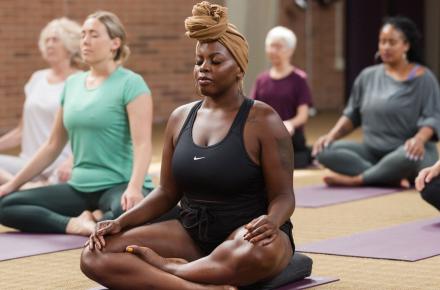Writing as Meditation


The first time I experienced writing as a meditative exercise, it was revelatory. The workshop leader handed each of us a writing board, a couple of pieces of paper, and a pen, and asked us to write down whatever came to mind. Ostensibly a simple task, but it was like trying to capture a kaleidoscope of butterflies in a net.
First of all, my thoughts came in too rapid a succession to get them all down. And then there was the wildness of the content of those streaming thoughts. As fast as I could write, there were thoughts that escaped the net entirely. And the ones I did catch were of many unexpected colors.
The workshop leader didn’t use any special term for that process, but I now know that what we were doing is called meditative journaling, or free writing, or simply a “brain dump.” Many people in many fields—including a variety of meditation traditions—are now championing this practice.
Probably the most well known is Julia Cameron, who introduced it in her 1992 book, The Artist’s Way, but Wikipedia tells us that the concept of free writing was presented much earlier—by Dorothea Brande, in her 1934 book Becoming a Writer. She advised readers to sit and write for 30 minutes every morning, as fast as they could.
Peter Elbow also advanced free writing in his 1975 book Writing Without Teachers, but it took The Artist’s Way to popularize the practice. Julia recommends—as do many other proponents of the practice—writing in longhand rather than on a computer, since it affects the neural pathways differently. Her suggestion is to do three pages of stream-of-consciousness writing every morning, clearing your mind for the creative activities of the day—and always writing these so-called Morning Pages by hand.
Now, however, there are websites offering a place to do the same thing on your computer. Yes, it’s different from writing by hand, but it does support your doing the process. I also find that it lets me capture more of the butterfly thoughts in the net as I type.
The site I use is called 750Words.com, where you can write totally privately—and there are bots that give you some interesting statistics about your writing, plus badges to earn that keep you going until you have painlessly created a valuable habit of free writing.
The name of the site came from the fact that three typewritten pages usually equals about 750 words. Also, it’s said that one can easily write a few hundred words in a sitting, but to get to the magic number of 750, you have to drop into a deeper place internally. The creator of the site, Buster Benson, has written an article about how he sees this kind of writing as even better than meditation, because it gives the brain something to do so that you can more easily observe the thoughts as they pass.
It’s a bit different to explore the idea of meditation as reporting what comes to you, rather than letting it all flow past and bringing the mind back to an object of concentration. In the Kripalu approach, we talk about three stages of meditation that align with Patanjali’s eight limbs of yoga, as outlined in his Yoga Sutras. Once we have brought our awareness inside through the practice of pratyahara, we move on to the first stage of meditation, known as dharana, which means learning to focus the mind. That brings us the various concentration practices, many of which I teach in my Introduction to Meditation program.
What changes in those practices is the object of concentration: In meditation on the breath, it’s watching the air coming in and out of the body; in walking meditation, it’s the feet and the process of walking; in loving-kindness meditation, it’s the phrases; and so forth.
To me, the concentration practices are the last willful practices in meditation before we fall into the next stage, dhyana, which is simply being present and noticing what comes into our awareness—as sensation, feeling tone, mental state, and/or thought.
That makes the use of free-form writing a Stage Two experience. You are not coming back to an object of concentration, but simply noting what is present for you in the moment. It’s helpful to have developed some focus through a concentration practice first, so that you can stay with what’s coming in, but the practice may, in turn, train you to be more present to what’s in your awareness even when you are not writing it down.
Give it a try—on a site such as 750 Words, or simply with paper and pen.
Here are a few basic instructions to get you started.
As in any meditation practice, find a space and time where you won’t be disturbed. Then set a boundary for the practice—either writing for a set length of time or for a set number of words or pages.
After that, simply begin to note down whatever is in your mind. If you’re doing this on paper, keep the pen moving. If you’re on a computer, let your fingers keep dancing over the keys. Keep writing until your boundary is reached (that’s easy on 750 Words, because they tell you when you reach that target).
If, at any time, you’re not sure what to write next, write that down until you can capture the next thought. Bear in mind that this is a personal practice. No one else will ever read what you write. That means you don’t have to worry about spelling, grammar, or any of the rules you learned in school. It’s not quality you’re looking for, it’s the act of writing down whatever comes.
The more you can eliminate the judging, editing, critical part of your mind, the freer your writing will be, and the more you’ll be able simply to observe your thoughts rather than being caught up in them. And that’s something to rejoice about!
Find out about upcoming programs with Bhavani Lorraine Nelson.
© Kripalu Center for Yoga & Health. All rights reserved. To request permission to reprint, please email editor@kripalu.org.














































